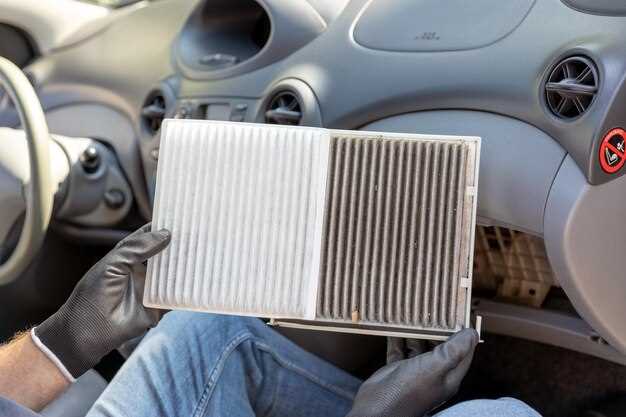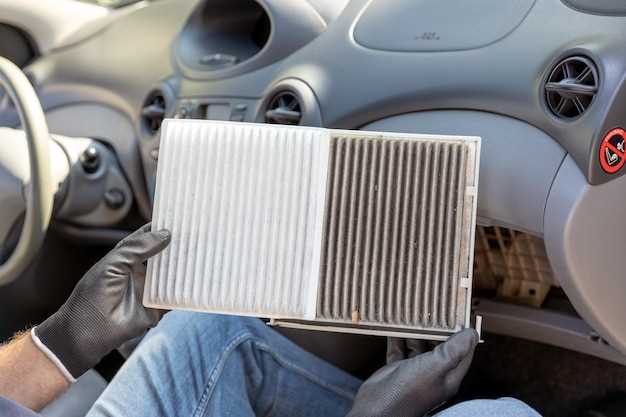
As vehicles age, their heating, ventilation, and air conditioning (HVAC) systems often begin to exhibit a variety of issues. These problems can affect not only the comfort of passengers but also the overall performance of the vehicle. Understanding these common HVAC complications can help owners maintain the functionality of their systems and avoid costly repairs.
Older vehicles may experience inefficiencies due to wear and tear on components, outdated technology, or lack of maintenance. Some frequent issues include malfunctioning temperature control, weak airflow, and refrigerant leaks. These problems can lead to an uncomfortable driving experience, as well as potential damage to the vehicle’s interior if not addressed promptly.
In older models, the control systems can also be prone to faults. A malfunctioning control system may result in improper temperature regulation or an inability to switch modes between heating and cooling effectively. By identifying and understanding these common HVAC problems, vehicle owners can take proactive steps to keep their systems operating smoothly.
Identifying Refrigerant Leaks and Their Impact on Temperature Control

Refrigerant leaks are a common issue in older vehicles, significantly affecting the performance of the HVAC system. Identifying these leaks early is crucial to maintaining optimal temperature control within the cabin. A refrigerant leak reduces the amount of coolant available to absorb heat from the cabin, leading to insufficient cooling during hot weather.
One of the initial signs of a refrigerant leak is a noticeable decrease in cooling efficiency. Drivers may observe that the air produced by the HVAC system is not as cold as it once was. This can lead to uncomfortable temperatures, especially in extreme weather conditions. Additionally, strange noises or hissing sounds may indicate escaping refrigerant, signaling a potential leak that needs attention.
Visual inspection is another effective method for identifying refrigerant leaks. Mechanics often check components such as hoses, connections, and the condenser for signs of oil residue, which can suggest a leak. Since refrigerants tend to carry lubricants, the presence of oil around these areas can be a telltale sign of an issue.
Utilizing specialized leak detection tools, such as UV dye or electronic leak detectors, can enhance the accuracy of identifying leaks. These tools allow for more precise location of the leak, ensuring that repairs can be executed effectively. Ignoring refrigerant leaks can result in further damage to the HVAC system and may lead to costly repairs, as well as an inability to maintain comfortable cabin temperatures.
To summarize, promptly identifying refrigerant leaks is essential for the proper functioning of a vehicle’s HVAC system. Ensuring that the system is sealed and functioning correctly will help maintain comfortable temperatures and prolong the life of the HVAC components.
Troubleshooting Common Electrical Issues in HVAC Systems
Electrical issues in HVAC systems can often lead to temperature regulation problems in older vehicles. To start troubleshooting, check the power supply to the HVAC system. Fuses may blow or circuit breakers may trip, disrupting the entire system’s functionality. If the battery is dead or weak, it can also affect the HVAC system’s ability to operate correctly.
Next, inspect the wiring and connectors for signs of wear, corrosion, or damage. Loose or frayed wires can lead to poor electrical connections, which may result in the HVAC not producing the desired temperature. Ensure all connections are secure and free of oxidization. Pay close attention to ground connections, as a poor ground can cause erratic performance or complete system failure.
If the HVAC system’s controls are not responding, the issue may lie within the control module or the thermostat. Test the thermostat with a multimeter to ensure it is functioning properly. A faulty thermostat can cause inaccurate temperature readings and, ultimately, inefficient heating or cooling.
Additionally, investigate the blower motor and its associated electrical components. If the blower motor is not running, it could indicate a problem with the motor itself or the relay that controls it. Use a multimeter to check for voltage at the motor terminals; if there is no voltage, look for broken wires or a failed relay.
Finally, consider the presence of any error codes that the vehicle may display, which can provide insights into the electrical subsystems of the HVAC. Use a diagnostic scanner to retrieve and decode these error messages, guiding you towards the specific electrical issues within the HVAC system.
Maintaining Climate Control: Repairing or Replacing Aging Components

In older vehicles, maintaining an effective HVAC system is crucial for ensuring optimal temperature control inside the cabin. Over time, components such as the compressor, condenser, evaporator, and blower motor may experience wear and tear, leading to reduced efficiency or complete system failure.
Repairing aging components can often be more cost-effective than outright replacement. For example, if the compressor begins to make unusual noises or operates intermittently, a thorough diagnosis can reveal specific issues, such as a refrigerant leak or a failing clutch. Addressing these issues through repair can restore functionality without the expense of a new unit.
However, there are instances where replacing aging HVAC components is the more practical solution. If the system is frequently requiring repairs or shows signs of extensive corrosion and damage, upgrading to a new unit can provide improved temperature control and reliability. New components are designed with advancements in technology that can enhance overall performance and efficiency.
Regular maintenance, such as changing filters, checking for leaks, and ensuring proper refrigerant levels, can prolong the life of HVAC components. Staying proactive with maintenance helps prevent larger issues down the road and can save on costs associated with both repairs and replacements.
Ultimately, whether to repair or replace aging HVAC components depends on the specific condition of the system and the vehicle owner’s budget. Thoughtful assessment and professional guidance will ensure that the decision balances both efficiency and cost-effectiveness, leading to better climate control and comfort while driving.

